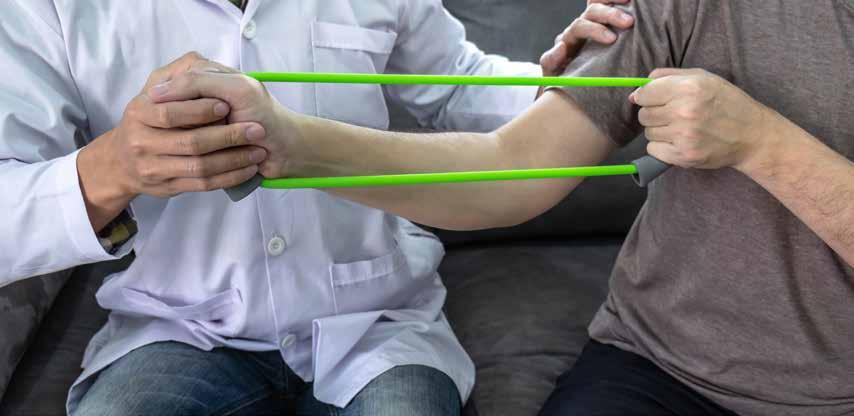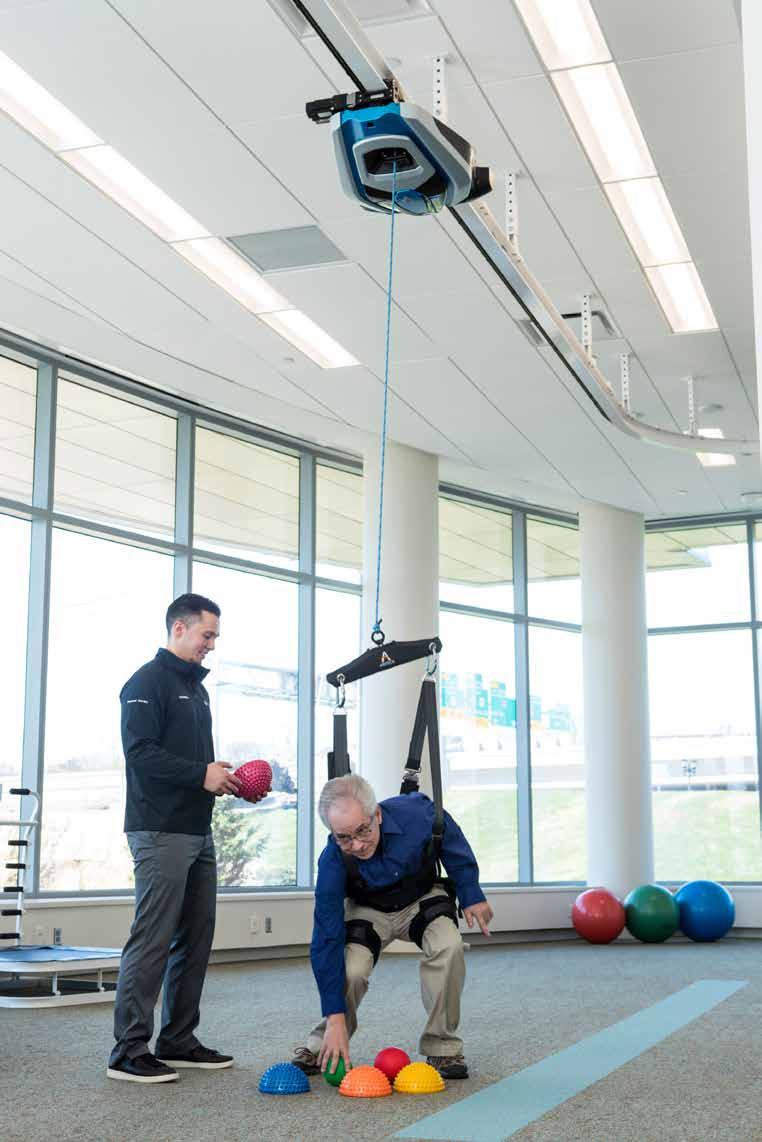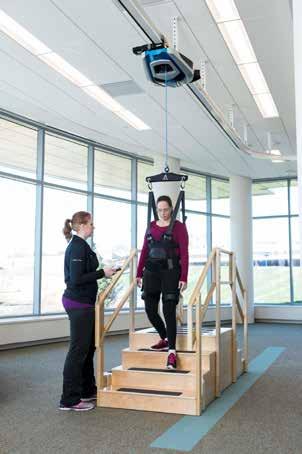
9 minute read
The Next Chapter on the Unified Post-Acute Care Prospective Payment System: Summary of the November 19 CMS/RTI Technical Expect Panel
Kate A. Beller, JD, AMRPA Executive Vice President for Policy Development and Government Relations
MedPAC June 2016 Report to Congress Since the passage of the Improving Medicare Post-Acute Care Transformation (IMPACT) Act in 2014, the American Medical Rehabilitation Providers Association (AMRPA) has actively engaged with the entities charged with developing Unified Post-Acute Care Prospective Payment System (UPAC PPS) prototype reports – the Department of Health and Human Services (through the Assistant Secretary for Planning and Evaluation (ASPE) and the Centers for Medicare and Medicaid Services), and the Medicare Payment Advisory Commission (MedPAC). Most recently, AMRPA was well-represented at the November 18, 2019, Technical Expert Panel (TEP) convened by CMS and its’ Unified PAC PPS contractor – the Research Triangle Institute, Inc. (RTI) – which included extensive discussion on the current design elements and overarching policy goals for the CMS/ RTI Unified PAC PPS prototype report. The November TEP was the second of four TEPs currently scheduled by CMS/RTI, with the two remaining TEPs anticipated in early and late 2020, respectively. In contrast to the question-and-answer format used in RTI’s initial TEP in September 2018, RTI outlined a more specific framework and areas of focus for panelist feedback in the November session, found in greater detail below
IMPACT Act: Background on Mandated Unified PAC PPS Reports and Recommendations In the five+ years since its passage, policymakers have been charged with carrying out three major mandates under the IMPACT Act: the development of quality measures in specific domains; the development and implementation of standardized patient assessment data elements (SPADE) within the four PAC payment systems; and exploration of a UPAC PPS. For the latter, the Act required a series of reports. The first was a report by the Medicare Payment Advisory Commission (MedPAC) published in June 2016. 1 In developing the report, MedPAC utilized the framework from the Post-Acute Care Payment Reform Demonstration (PAC PRD) and its data to evaluate and recommend features of a prospective payment system that establishes payment rates according to patient characteristics rather than PAC setting. Since its initial publication, MedPAC has discussed implementation issues associated with the proposal – such as sequential stays and aligning statutory and regulatory requirements – among others policy issues, with further analysis expected in its 2020 reports to Congress.
In addition to MedPAC’s work, the IMPACT Act also directs the HHS Secretary to send a report to Congress on a technical prototype of a UPAC PPS. Similar to the MedPAC deliverable, the HHS report must outline a PPS under which payments are based on individual characteristics, such as cognitive ability, functional status and impairments, in lieu of the setting in which they are furnished. The system is also to account for the clinical appropriateness of services and incorporate the SPADEs required by the Act. Finally, the report must provide an analysis of the impact of the prototype on beneficiary cost sharing, access to care and choice of setting, and Medicare payments. To carry out this directive, CMS and the HHS ASPE entered into a contract again with RTI International to work on developing the UPAC PPS report and related recommendations.
In September 2018, RTI held its initial TEP, to which AMRPA was invited to participate. The purpose of this panel was to discuss foundational questions to inform exploratory research on a technical prototype for a UPAC PPS. Stakeholders were encouraged to provide substantive input on ways to design a UPAC PPS where payments are based on beneficiary characteristics rather than PAC setting. RTI noted that the discussion during that TEP helped facilitate the agenda and areas of focus for the most recent November 2019 TEP.
Summary of November 2019 TEP Discussion The November 18 TEP was the second of four currently scheduled meetings related to CMS/RTI’s Unified PAC PPS work; a TEP in early 2020 is intended to review RTI’s analysis to date, while a TEP in late 2020 will focus on “other considerations” for a prototype. AMRPA was represented on the November TEP by Suzanne Kauserud, Vice President of Carolinas Rehab, along with other AMRPA members and staff representing their own hospitals/systems and serving as observers.
Unlike the September 2018 TEP, CMS/RTI did not ask the panelists to provide feedback on specific issues/questions at the close of the November 2019 discussion. Nevertheless, AMRPA is closely reviewing the TEP discussion and materials, and plans to engage with CMS/RTI on the key issues and open questions identified from this most recent TEP. Some selected highlights from the discussion include:
Impetus for CMS/RTI Work & Current Challenges: RTI officials repeatedly provided an overview of the issues they view as necessitating discussion of a Unified PAC PPS prototype, such as: overlap in the characteristics of patients treated across PAC settings; “significantly” different Medicare payments for PAC services across settings for similar patients; analytical challenges created by the different diagnoses groups and assessments used across settings; and the siloed nature of PAC settings, as well as the fact that patients use more than one setting in their trajectory of care
Case Mix Grouping: RTI unveiled a grouper model based on the Major Diagnostic Category (MDC) called “MDC+,” which has been developed for a Unified PAC PPS model and is intended to account for certain data (such as surgical procedures and conditions generally treated in PAC settings) to “better reflect the reason for a patient’s PAC stay.” The grouper will be primarily based on short-term acute care hospital (STACH) MS-DRG data. However, panelists raised significant concern about the utility/accuracy of continuing to use STACH data for identifying diagnosis in a Unified PAC PPS prototype, even if combined with PAC assessment data or other inputs included in the “MDC+” formula.
Motor Function: RTI affirmed the inclusion of motor function in their prototype, and sought input on which motor score items would be most appropriate in the context of a Unified PAC PPS prototype
Prototype Options: RTI is exploring two potential prototype models: one would largely keep the PAC silos and regulatory landscape in place, and create a new “unified clinical component” to capture patient-specific characteristics (to be added to a setting-specific indicator). The second option would provide payment for a certain period (e.g., 30 days) and would capture up to three PAC stays for a patient. This second option would also assume greater flexibility regarding provider certification requirements, among other waivers. RTI asked for input on the numerous regulatory changes that would be required to facilitate this type of model.
Patient/Provider Populations: RTI asserted that their prototype work will explore “combinations” of providers, such as all acute PAC settings. With respect to patients, the model will include both community entrants and post-STACH PAC admissions
Potential “PAC Navigator” Role: RTI asserted that they are considering including a patient navigator in a Unified PAC PPS to help address the challenges of care transitions, and sought feedback on ways to implement this type of function into the payment system (for example, whether it should be part of PAC providers’ conditions of participation). Numerous panelists expressed support for a PAC navigator role, but opined that this be an incentive-style program rather than one driven by financial/administrative penalties. Interoperability between PAC settings was also raised as a potential complicating factor.
General Concerns re: Unified PAC PPS Implementation: Throughout the meeting, panelists raised concern with the fact that the data being used to build the prototype (2017- 2019) reflects a period of major transition in most of the PAC payment systems, as well as the fact RTI is capturing fewer years of SPADE-reported data from the home health industry, among others. RTI repeatedly asserted that it recognizes that it is not using the “cleanest data” in its work, but that it is continually updating its analysis and incorporating stakeholder feedback as it proceeds with its mandate under the IMPACT Act. Throughout the meeting, panelists noted that while they understand that RTI has to submit a report based on data in some point in time, they raised particular concern that the 2017 data reflects care delivery patterns, PAC placements, and expenditures that vary significantly from more updated analysis.
Prototype Testing: Several panelists and observers urged RTI to consider a small-scale testing of any Unified PAC PPS prototype in light of the acknowledged analytical concerns; RTI responded that while it will include “caveats” in its report, it is not authorized to recommend that the prototype be tested prior to implementation.
Medicare Advantage Impact: A handful of panelists noted that the MA program fundamentally changes each PAC setting’s case-mix and cost data, and urged RTI to factor this into a Unified PAC PPS prototype (and if not, to include the MA impact as one of the “caveats” included with the report).
Discussion of High-Cost Ancillaries: Several panelists expressed support for a recommendation that high-cost ancillaries – such as chemotherapy and infusion therapy – be carved out, and that behavioral health services be added to such a carve-out policy. Panelists also expressed general support for the use of a high-cost outlier policy and interrupted stay policy under a Unified PAC PPS prototype.
Report Timeframe: RTI refused to commit to a certain date for the release of their report.
As previously mentioned, RTI has not yet asked panelists to respond to specific questions leading into the next TEP. Nevertheless, AMRPA is closely analyzing and planning to respond to several of the “open questions” raised during the TEP discussion, particularly related to motor function, comorbidity, and the MDC+ model. Such questions raised by TEP include: Are MDC Plus Groupings sufficiently sensitive for the first step of differentiating patients in a Unified PAC PPS case-mix methodology?
Is MDC Plus Grouping assignment based on prior acute hospitalization (when available) appropriate for case-mix grouping in a Unified PAC PPS? If not, what is an alternative method?
Are there setting-specific issues that should be considered in the primary diagnosis assignment approach?
How should comorbidities be defined in a Unified PAC PPS?
How can approaches in the current PAC payment systems inform an approach in a Unified PAC PPS?
Are there condition-specific considerations that might affect the approach to defining comorbidity in a Unified PAC PPS?
Do the items proposed by RTI work “reasonably well” for measuring motor function across all settings?
Are there additional setting-specific issues to be considered in for a motor function score in a Unified PAC PPS?
AMRPA will keep members abreast of our continued advocacy and engagement on issues raised during the most recent TEP, as well as our strategic participation in the TEPs convened in 2020.
ROBOTIC BODY-WEIGHT SUPPORT SYSTEM www.aretechllc.com I 800-710-0370





Transforming Medical Rehabilitation

Delivering the highest quality of patient care and outcomes through a growing national network of inpatient rehabilitation hospitals.
Proud Sponsor of the AMRPA










